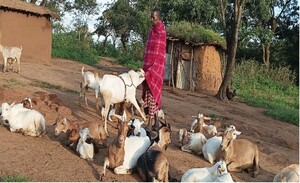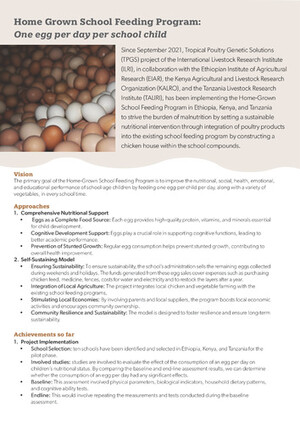
Effects of breed exoticness and agroecological zones on selected production and fertility traits in multibreed dairy cattle in Kenya
Abstract
The aim of this study was to evaluate the effect of degree of exoticness of multi-breed dairy cattle on production and fertility traits in 3 different agroecological zones of Kenya. Test-day milk yield (MY) records (n = 62321) together with fertility-trait records on age at first calving (AFC) (n = 1490) and calving interval (CI) (n = 2640) from a total of 1490 dairy cattle performing in semi-arid arable, semi-arid pasture-based, and semi-humid agroecological zones were analyzed. Animals were grouped into two breed classes based on the proportion of exoticness in their breed composition. These groups were, Exotic Class 1 (EC1) (≤50% exotic, n = 481) and EC2 (>50% exotic, n = 1009). A multiple linear regression model was fitted for AFC and a mixed-repeatability model for test-day MY and CI to determine the effect of exoticness on these traits and to assess whether this effect changed in the different agroecological zones. Overall, EC2 cows had lower AFC than EC1 cows (32.4, se = 0.2 vs. 34.0, se = 0.2 months). However, EC1 cows had a shorter CI than EC2 cows (452, se = 6 vs 466, se = 7 days). Within breed group comparison showed that EC1 had a larger AFC of 36.7 months (se = 0.4) in the semi-arid pasture-based agroecological zone compared to 31.0 (se=0.6) in the semi-humid environment. This denotes delayed puberty in the semi-arid pasture-based agroecological zone. For the EC2, however, it was in the semi-arid arable agroecological zone where cows had the higher AFC compared to the semi-humid environment (34.7, se=0.2 vs. 28.9, se=0.3). In both breed groups, MY was highest in semi-humid and lowest in semi-arid pasture-based environment. Although the semi-humid agroecological zone seemed to favor the onset of puberty and high milk yield, this environment had the longest CI for both breed groups (478, se=9 days for EC1 and 484, se= 7 for EC2). Genotype by environment interaction was significant for AFC and MY (P<0.01). These findings demonstrated that biophysical variation in different agroecological zones affects production and fertility traits in multibreed dairy cattle differently and hence, it is an important factor to consider when designing genetic improvement programs.
Citation
Oloo, R.D., Ekine-Dzivenu, C., Ojango, J.M.K., Mrode, R., Okeyo Mwai, A., Chagunda, M. 2021. Effects of breed exoticness and agroecological zones on selected production and fertility traits in multibreed dairy cattle in Kenya. Poster prepared for Tropentag 2021 - Towards shifting paradigms in agriculture for a healthy and sustainable future, 15-17 September 2021. Hohenheim: University of Hohenheim










